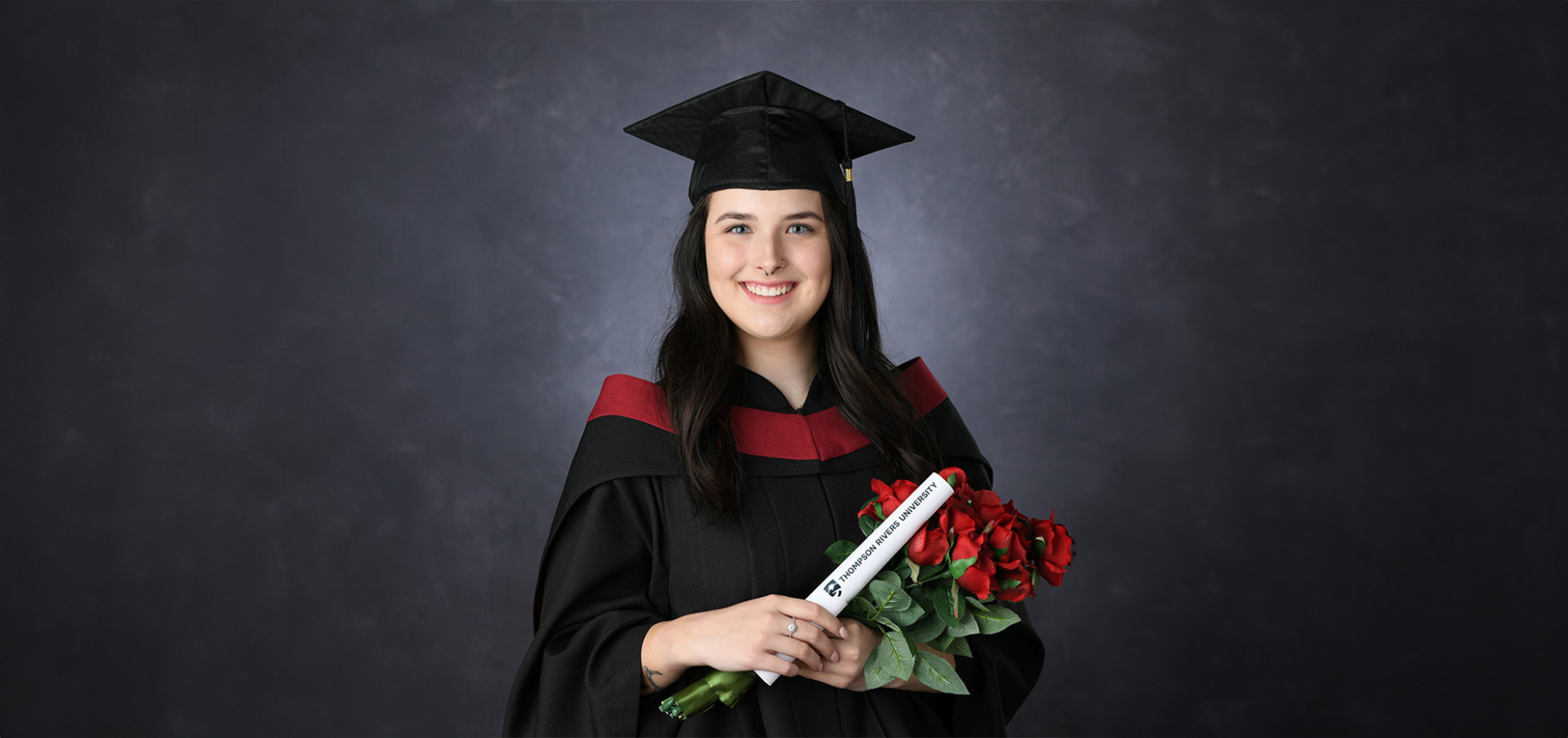
Third time’s the charm for TRU education student – TRU Newsroom
Rachel Dixon has two degrees from TRU and is now embarking on her Master of Education here.
For as long as she can remember, Bachelor of Education student Rachel Dixon has always felt at home in the classroom — in fact, it runs in the family.
Dixon’s mother and role model, Arlene Dixon, is a longtime kindergarten and Grade 1 teacher at Tk’emlúps te Secwépemc’s Sk’elép School of Excellence, and Dixon aims to follow in her footsteps. At a very young age, Dixon knew she wanted to be a teacher some day. When other kids were playing tag, she was having a great time organizing school supplies and pretending to be a teacher.
Now, after earning a prestigious academic scholarship, Dixon is preparing for a Master of Education.
She completed a Bachelor of Arts at TRU and then set her sights on a Bachelor of Education. She was accepted at two post-secondary institutions and chose TRU. There were a few factors that influenced her choice, but ultimately, Dixon’s goal was to stay in the community and begin her career, so she wanted to continue to build connections in Kamloops. Small class sizes were also an important motivating factor in her choosing TRU for her second degree.
“In the Bachelor of Education program, it’s really nice to have one-to-one connections with professors. I can build relationships with instructors and other students. It’s really rewarding to have those connections,” Dixon says.
Indigenous cohort
She says the School of Education is collaboratively working on Indigenization and Indigenous students have a seat at the table. There is an Indigenous student cohort consisting of five students, including Dixon, who is a member of the Ashcroft Indian Band in the Nlaka’pamux Nation. If there are classes with an Indigenous focus, the Indigenous cohort is able to take that class separately. This means the group of five can discuss the material in a culturally safe space. Her group is happy to share their experiences and knowledge with instructors and peers, she adds.
“The five of us are able to talk about and share our culture with our peers. They know they can come to me with questions or if they are uncomfortable with something. The five of us are very open to doing that,” says Dixon.
She knows her fellow students have a range of backgrounds and experiences regarding learning about Indigenous culture.
“Some people are from schools that didn’t talk about Indigenous culture. They come into this program and really don’t have an idea. It’s nice to be able to share our experiences as we go through the program together.”
The BC school curriculum was recently redesigned to integrate Indigenous knowledge and perspectives. This is a big shift in what future teachers must learn in university and how they’ll teach in their careers.
“Trying to understand this curriculum change on your own can be very difficult. Even being Indigenous myself, the content can seem intimidating. There’s a lot to it and you don’t want to mess it up. Having the Indigenous cohort (in the program), we can talk among ourselves and share knowledge with others. It’s really nice to be able to work with peers that way,” Dixon says.
Learning from each other
In her experience, instructors and students are on this journey together.
“We are all in this program together. The professors are learning alongside us. That’s one of the things I like about TRU. The professor doesn’t just stand in the front of the room and talk — it’s very balanced, collaborative and they are willing to learn from students.”
Now Dixon has chosen TRU for a third time.
She always wanted to pursue graduate studies. A scholarship recognizing academic excellence sealed the deal for her return to TRU to earn her Master of Education. Dixon was awarded the Alvin and Lydia Grunert scholarship because she earned the highest undergraduate GPA within the entire Faculty of Education and Social Work.
She’s looking forward to her future career as a teacher and is pleased she’ll bring Indigenous representation to the classroom.
“As a teacher, having a different background is so important and beneficial for students. I went into one elementary classroom and shared that I was Indigenous. Even that small comment impacted one student. He was so excited and came up to me afterward. He shared that he was also Indigenous and how that’s not often talked about in the classroom. That connection I had with that student was so important,” Dixon says.
